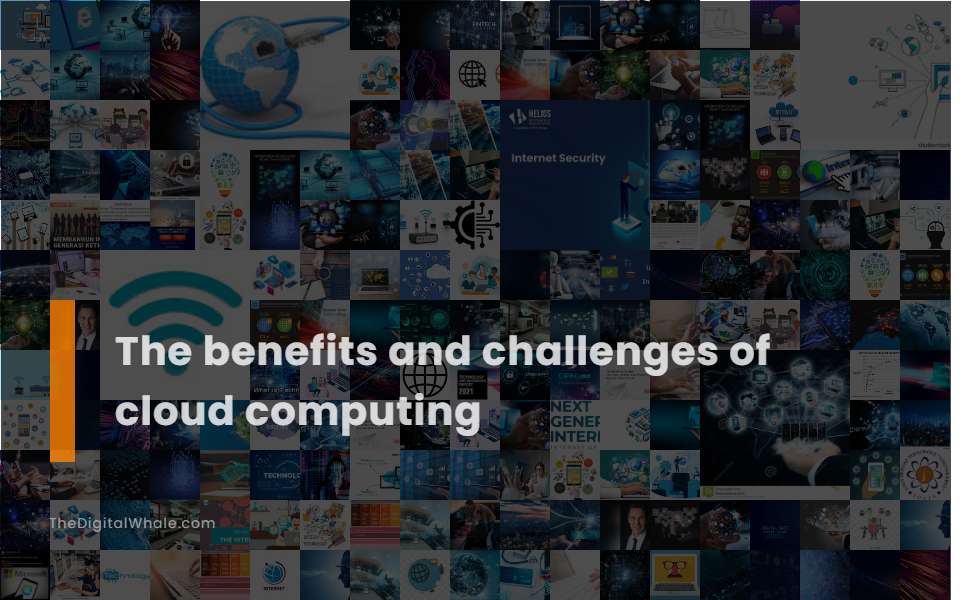The Benefits and Challenges of Cloud Computing
When you use cloud services, do you have lost control of your data and applications? What are the benefits and challenges of cloud computing in businesses? Let's find out more about The Benefits and Challenges of Cloud Computing.

Cost Savings: Pay-as-you-go pricing and reduced need for on-premises hardware.
Cloud computing offers significant cost savings through pay-as-you-go pricing, eliminating the need for upfront capital expenditures on hardware and infrastructure. This allows businesses to scale resources up or down as needed, potentially reducing IT costs compared to on-premises data centers. For more detailed insights into how businesses can benefit from these savings, you can explore further information on the Cloud Savings page. This flexibility and efficiency make cloud computing an attractive option for organizations seeking to optimize their IT spending.
Scalability and Flexibility: Easily scale up or down to meet changing business needs.
Cloud scalability is a crucial aspect of modern business infrastructure, offering advantages such as improved flexibility, better cost control, increased performance, and enhanced reliability. It enables businesses to dynamically adjust resources to meet changing demands, optimizing operations and minimizing downtime. This adaptability allows organizations to efficiently manage fluctuating workloads, ensuring high performance and minimal service disruption. For more insights into how cloud scalability supports flexible and reliable data infrastructure, you can visit NoPS. This approach not only ensures a seamless operation but also optimizes costs by automatically adjusting resources and distributing workloads effectively.
Rapid Deployment: Quick access to new IT resources, reducing deployment time from weeks to minutes.
Cloud computing enables rapid deployment by providing readily available infrastructure, allowing organizations to develop, test, and deploy applications quickly without managing physical hardware, drastically reducing deployment time. The ability to swiftly create and launch new resources keeps companies agile and responsive in a fast-moving environment. For more insights into the Advantages of Cloud Computing, one can explore how these technologies support businesses in maintaining a competitive edge.
Improved Security: Secure data centers and expert management of security issues.
Cloud Security offers improved security through robust encryption, access controls, and expert management, ensuring data protection both at rest and in transit, and providing high levels of redundancy and reliability. Data centers in cloud computing employ layered security systems, including physical security, network security, and data security measures such as encryption and access control, to ensure the confidentiality, integrity, and availability of data. For more detailed insights into these benefits, you can explore the comprehensive guide on Cloud Security.
Enhanced Collaboration and Productivity: Easy access to shared data and applications.
Cloud computing enhances collaboration and productivity by allowing teams to access and share documents and data from anywhere, facilitating seamless communication and real-time teamwork, which leads to more efficient and effective performance. By utilizing Cloud Services, businesses benefit from easy access to shared data and applications, promoting real-time collaboration across different locations, reducing time spent on emails, and enhancing project completion efficiency, thus boosting overall business productivity.
Related:
What is a domain name with a good online presence? How can I build a strong personal brand online when any business launches? Let's find out more about Building A Strong Personal Brand Online.
Disaster Recovery and Business Continuity: Deployment across multiple data centers ensures uninterrupted services.
Deploying across multiple data centers in cloud computing ensures uninterrupted services by enabling geographic redundancy, data replication, and failover mechanisms, which are crucial for both disaster recovery and business continuity, thereby maintaining overall business operations and minimizing downtime. Cloud-based disaster recovery and business continuity plans offer benefits such as rapid recovery, global reach, and redundancy, reducing downtime and costs. However, they also present challenges like data transfer costs and the need for regular testing to ensure effectiveness. For more in-depth information, you can explore the Differences Between Disaster Recovery and Business Continuity in Cloud Computing on GeeksforGeeks.
Data Security and Privacy Concerns: Risks of data breaches, compromised credentials, and sensitive data exposure.
In the ever-evolving landscape of cloud computing, organizations face significant data security and privacy concerns, primarily centered around risks such as data breaches, compromised credentials, and sensitive data exposure. These issues often stem from misconfigurations, insecure APIs, and account hijacking, which are exacerbated by the expanded attack surface in cloud environments. As highlighted by SentinelOne, mitigating these risks requires a robust cloud security strategy. Cloud data security remains crucial for safeguarding against breaches and unauthorized access, with challenges like misconfigurations and lack of visibility demanding stringent access controls and encryption. These measures are vital to ensure compliance with industry regulations and to maintain customer trust in cloud services.
Network Dependence: High reliance on internet connectivity and potential network outages.
Cloud computing heavily relies on reliable and secure network connectivity, as any disruption can halt cloud services. Network outages, whether due to technical issues, human errors, or external factors like fiber cuts or DDOS attacks, can significantly impact cloud performance and availability. Ensuring the success of cloud computing depends on creating a robust infrastructure that can withstand such disruptions. Key strategies include diversifying network paths, implementing advanced security measures, and maintaining real-time monitoring systems. For businesses looking to optimize their cloud operations, understanding the complexities involved is crucial. Detailed insights and strategies can be found in the article on Cloud Computing Success, which delves into the intricate relationship between network reliability and cloud service effectiveness.
Migration Challenges: Difficulties in moving existing applications to the cloud, including troubleshooting and downtime.
Migration to the cloud is fraught with challenges, including ensuring compatibility between existing infrastructure and cloud environments, managing service disruptions, addressing data integrity and validation issues, and mitigating security concerns such as data breaches and misconfigured cloud settings. Effective strategies involve thorough planning, test migrations, and robust data validation to minimize downtime and ensure a smooth transition. For more detailed insights, you can explore the Cloud Migration Challenges article on Atlan's website.
Interoperability and Portability Issues: Challenges in switching between cloud providers due to lack of flexibility and potential lockdown periods.
Switching between cloud providers presents significant challenges, primarily due to the lack of standard APIs, especially in SaaS platforms, which limits flexibility and can lead to potential lockdown periods. Additionally, the process often requires complex data format transformations and the use of distinct tooling tailored for different cloud services, which adds layers of complexity. Moreover, issues such as ensuring safe and fluent data migration and establishing secure and compliant networks remain pivotal hurdles. These challenges often lead to restricted user access and significantly reduced productivity, further complicating the transition process. For more insights on these challenges, a detailed exploration can be found in this article on Cloud Interoperability and Portability.
Related:
How can I help my child develop healthy learning habits? How can parents help their children develop healthy habits early in life? Let's find out more about How Parents Can Help Their Children Develop Healthy Tech Habits.
